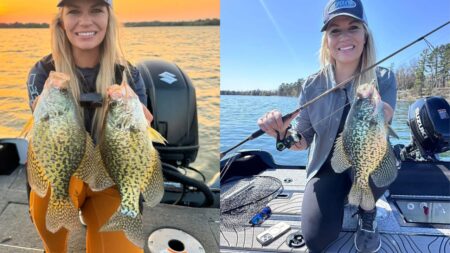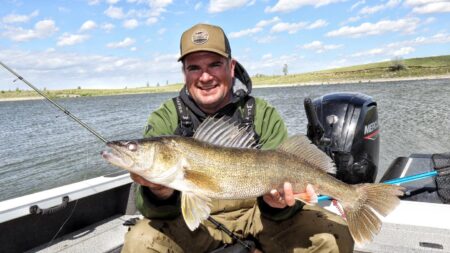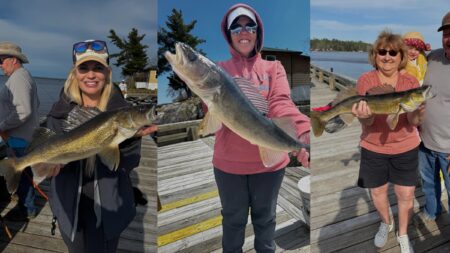Rainy River is hands down one of the best locations in the country to catch the walleye of a lifetime. Best of all, fishing a river means big fish tend to congregate which makes targeting trophies that much easier. However, it’s not just as simple as planning a trip and showing up. Knowing the presentations and patterns are important, but timing really is everything.
Rivers act as a funnel, congregating fish in higher densities. With limited space, depth, and structures, fish are much more accessible to anglers. For the novice, there couldn’t be a better situation. If you are looking to get a new angler hooked on fishing, this is going to be one of the best places to do it.
However, for many people, it is still intimidating. That’s why I’ve created this guide for tackling the river on your own. Below I breakdown:
- When to go
- Where to stay
- Places to launch from
- How to target the fish
- My favorite presentations
- How you can hook into a bonus sturgeon
- A list of beginner’s tips I wish I would have known
From the basics to the presentations, I have the information below.
About Rainy River
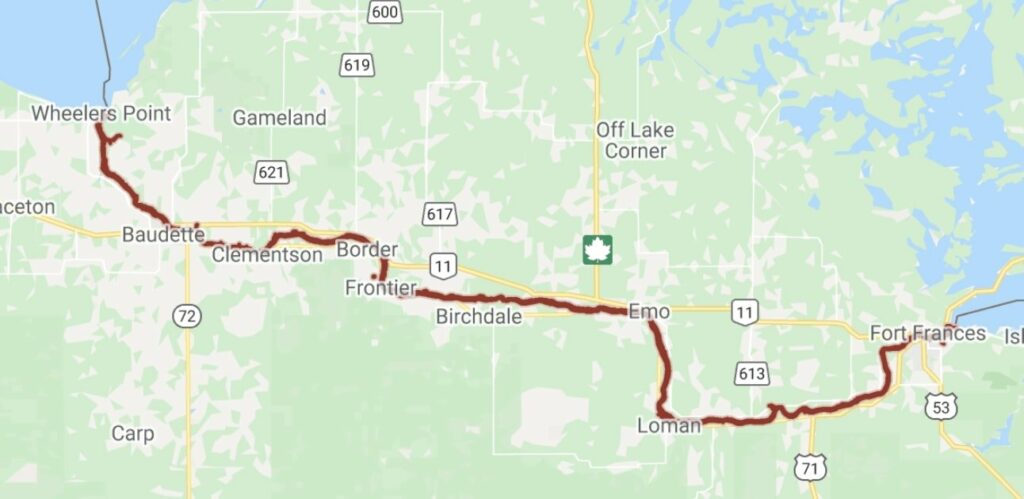
For starters, Rainy River is situated on the border of Ontario and Minnesota. It funnels from Rainy Lake to Lake of the Woods, joining two fantastic fisheries together. As border water, it’s open to walleye fishing until mid-April on the US side, making it the perfect destination to target those pre-spawn walleye.
Of course, there is no question that there is plenty of trophy fish holding in the river all year long. However, two factors seem to influence the higher density of these fish:
- Pre-spawning behavior in the spring
- The shiner run in the fall
These are going to be two times when larger numbers of trophy fish are funneled in the system, and they are actively feeding.
For the scope of this article, we are going to cover everything you need to know about targeting these fish during the spring.
Fishing Rainy River For Walleye in the Spring
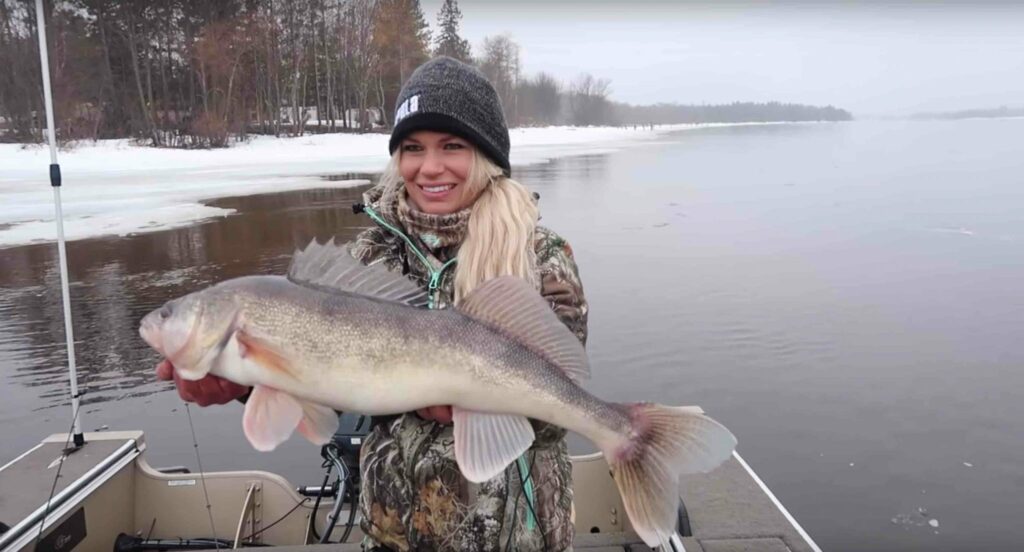
The Perfect Timing
Timing is going to be the most important factor in the spring. It can either make or break your trip. Sometimes, if you time it wrong – it means you don’t have a trip at all.
The key is to hit the river immediately after ice-out and before “the forks” break.
“The forks” (the local term) are actually the Big Fork River and Little Fork Rivers, two tributaries that contribute a significant amount of outflow to Rainy. Once the ice breaks on these two bodies, the river rises rapidly and with it comes dirty, debris-filled water.
Not only does this make boating difficult, but this also affects the fish turnover rate. Whether it be from changing fish patterns, or the simple fact that fish can’t detect bait as easily in dirty water, finding feeding fish is much more difficult at this time. Sometimes it’s so bad that the river passage isn’t even safe.
That’s why it’s important to monitor the ice and weather conditions prior to your trip. Many people take a shot and book the second week of April (being the final week of the season), but this too can be a problem, because early ice out often means the forks have already broken by this time and therefore the water is dirty and filled with debris. Ice out varies considerably by year, so your best bet is to play it by ear.
Personally, we have gravitated towards the first weekend of April, but this isn’t always a safe bet either. That’s why it’s important that you do your research and stay in touch with local bait shops, resorts, and guide services. They will have a gauge of ice conditions early on, helping you better plan your trip in advance. A few of my favorite places to find information include:
- Facebook Pages
- Forums
- Local Bait Shops and Resorts
There is an International Boundary
Next, let’s talk about the invisible boundary. What many people don’t realize is the significance of international boundaries over border waters. In this case, it runs through the river, and it’s important that you pay attention to your GPS to know exactly where that boundary is. If you fish the Ontario side, you need an Ontario license and need to fish by Ontario regulations. Many people will cover their basis and invest in both a US and Ontario fishing license.
You can find Ontario fishing information here.
Avoid the Massive Crowds
One of the biggest differences between spring and fall fishing is the crowds. In the spring, you will see hundreds of boats lined up at the accesses, and sometimes between heavy boat traffic and ice chunks, navigating the river can be a challenge.
That’s why I recommend either going on the weekdays, on the worst weather days, or getting to one of the public accesses early. If you can be there right before day breaks, you will usually be one of the first on the water. This means you will land a spot in a designated parking space, saving you a lot of time and headache when trying to get back. This also means I recommend getting back early – that way you can also avoid the chaos towards dark.
Planning Your Rainy River Walleye Trip
Where to Stay
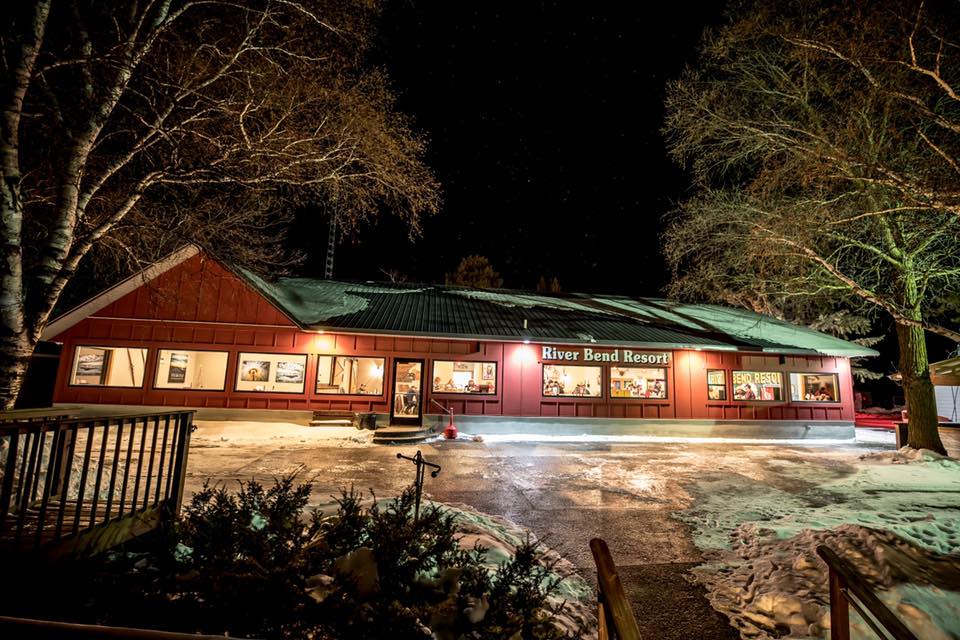
With large crowds come lodging limitations. In fact, lodging fills up quickly during the spring Rainy River walleye period. Therefore, it’s important you have a few places in mind when you decide to commit to a trip.
- The biggest problem is if you commit too early, you might not have open water OR the water might be filled from debris.
- If you wait too long then you might miss out on lodging altogether.
That’s why it’s important that you find a lodging service that is both accommodating and flexible.
It’s no secred that we generally choose River Bend’s Resort. They have a fantastic restaurant/bar (with plenty of space), a variety of cabins to fit your needs and budget, and are incredibly accommodating (the best part of all). You can check out more about River Bend’s Resort here. They also have the Walleye Inn if you are looking for a very budget-friendly option.
Where to Launch
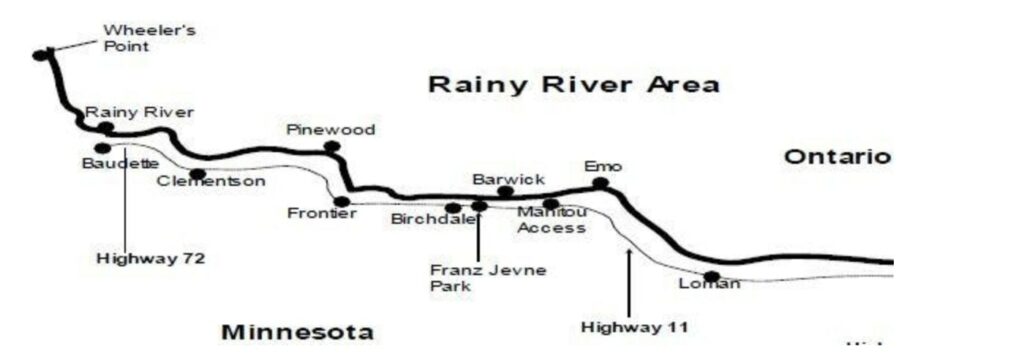
Public accesses lay along the entire river. However, I only have experienced fishing in the western half, therefore, the focus of this article is Manitou and west. Common launch points in this area include Birchdale, Frontier, Clementson (Vidas) and Baudette (Timber Mill). I’ve launched out of all of them. I’ve had success out of all of them. However, there are two things to note:
- The Birchdale is often the first “upriver” access to be open in the spring, and therefore the most packed.
- Birchdale is also one of the few locations to allow camping.
- Frontier only has one launch (instead of two), which is also something you need to consider when determining launch time. If the line is less, it doesn’t mean the wait time is any less.
- You cannot park on Highway 11, so choose your timing and placement wisely.
- For quality, Vidas and Timbermill (Baudette) are my favorite, but also last to open up.
Gear
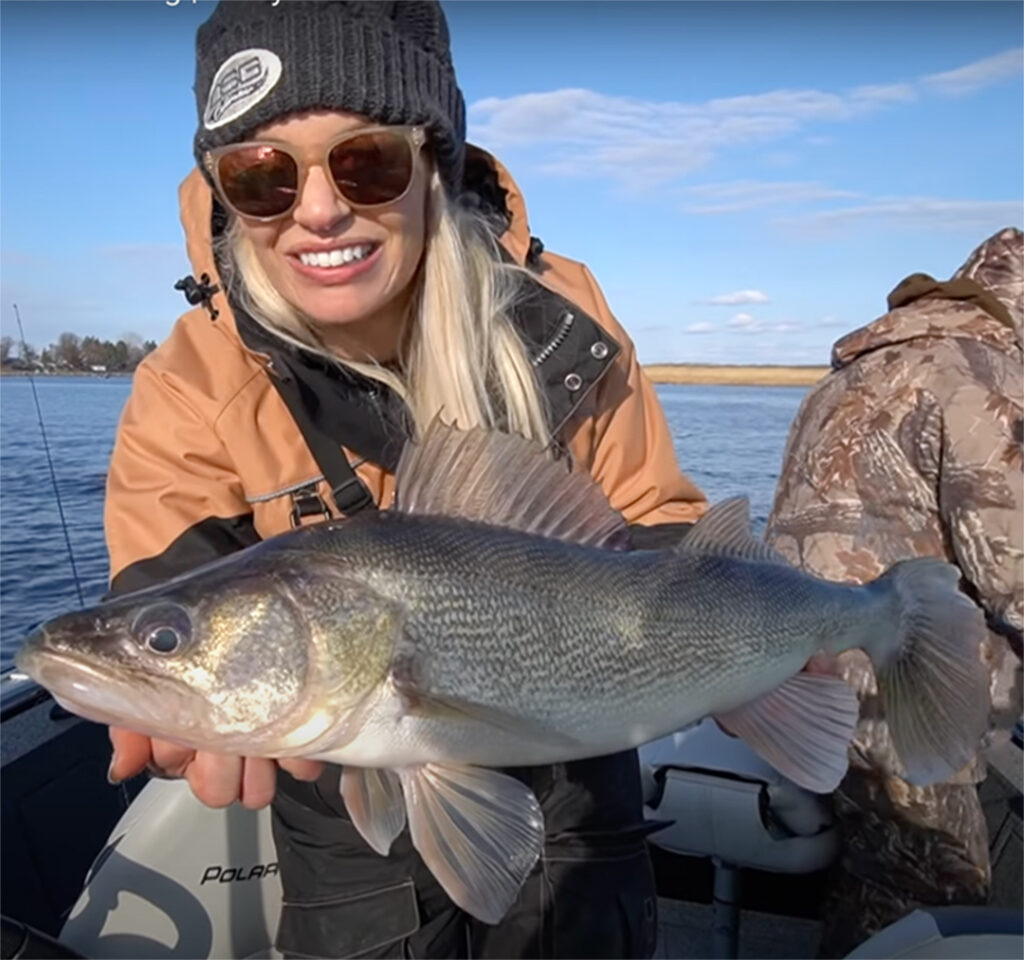
I generally always have a basic gear list for destinations. Most of it goes without saying. What most people don’t seem to realize; though, is just how cold and wet it really can be in the spring. Sometimes those rainy and coldest days are going to be your best days (with the least crowd). Nothing is worse than a 35-degree rain, so prepare for it.
- Rain gear/warm gear (if you are lady, be sure to check out DSG – all that I wear – right here.
- Plenty of heavy jigs ( I like quarter or bigger this time of year) – both with long shanks and short shanks (grab 15% off with Nicole15 at Lurenet)
- Plastics (the YUM Break N Shad is the perfect fluke and Yum Pulse – use code nicole15 for a discount).
- Your favorite walleye rod (I use a medium, fast action rod – try the St. Croix Avid Walleye Fast)
- Flat weights and circle hooks if you want to try to for sturgeon (read that guide here)
- A bigger net ;)
We go through the tackle, bait, and presentation below.
How to Target Rainy River Walleye
Let me start by saying that there are times when you can fish nearly anywhere on the river and catch a trophy, and there are times when you definitely have to work for it. I’ve seen both.
The key is going to be finding wherein the channel the fish are holding. This depends on water temperature, river depth, and baitfish availability. These are three factors you, of course, cannot control.
However, what you can do is find traditional spots that fish will hold to, and give each a shot.
If the river is high, oftentimes I’ve found the big fish to funnel out of the main current. The key to looking for changes in the current – “current seams” they call it. Slack water can hold fish, but I’ve found that it can’t be stagnant. Great places to start include:
- Inlets
- Current seams (where two areas of the current meet – you’ll notice a change in water movement)
- Near rapids (where there are rocks, there are current seams)
- The outside bend where the fish will funnel (slack water – but not stagnant)
Fish will generally funnel out of the current to chase bait. Often times this means being set up along the perfect location is key, generally just outside the current and along the slack water. If you see bait on sonar, that’s a great sign! There are likely predator fish behind it. I always look for consistent bait on sonar before deciding to move.
When the flow is low and slow, I find the opposite to be true. Fish will run down the middle, and as deep as possible to avoid the traffic. It’s these times I’ve found my biggest fish in 30 + feet dragging jigs. Livescope helped me see where the fish were funneling and it made all of the difference.
Placement is everything. If one person is catching all of the fish, I would examine which side of the boat they are on and how far back their line is. Sometimes fish funnel through a certain area, and it’s all about being along that exact line.
Presentations
There aren’t any wrong presentations. I’m a big believer in trying anything and everything to find out what works. However, in this process there are a few presentations I’ve personally found the most success with:
- Bouncing/Dragging Jigs and Minnows
- Slow Running Crankbaits
- Dragging Jigs and Plastics (my favorite in the spring)
Bouncing Spinner Jigs
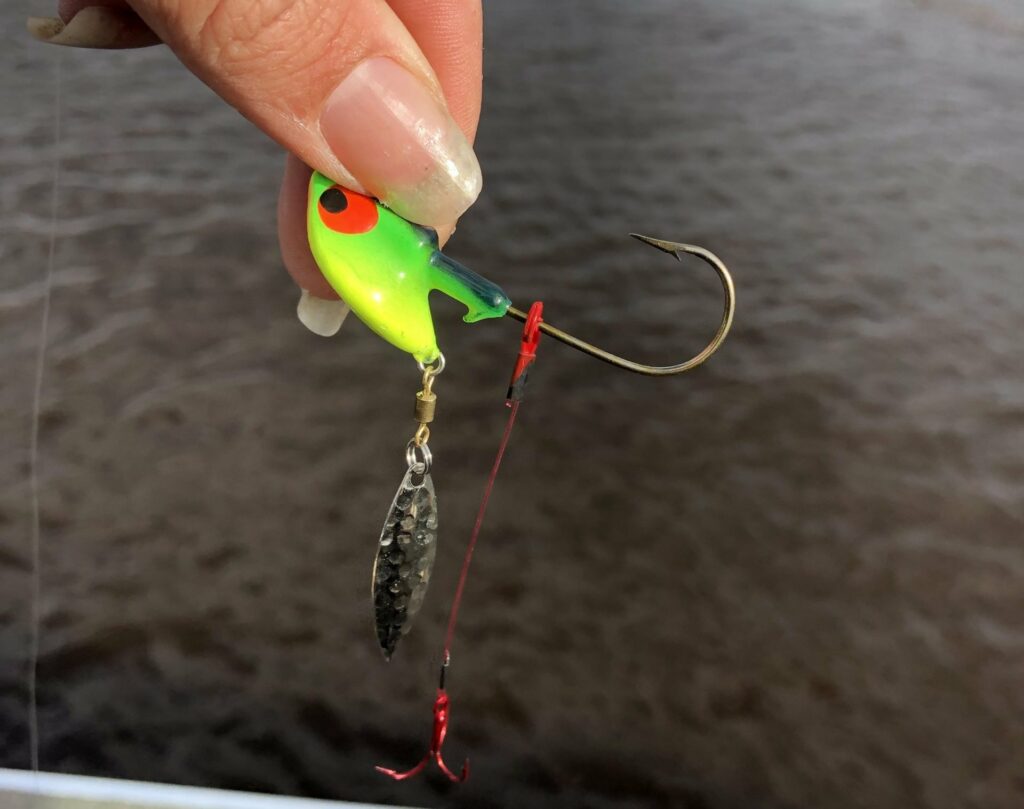
We go slow, no more than .3-.5mph (against the current it doesn’t even seem like we were moving), and we BARELY drag the jig on the bottom. The goal is to have just enough weight to reach the bottom, but not too much that it loses its natural buoyancy from the current. If you have a bladed jig – it’s ideal to have it spinning at least a little bit. We tipped these with dead shiners. As you can see, we also added a stinger hook. That extra extension made a difference in turnover rate.
Remember finding the right weight will take trial and error. It depends on the current speed and depth of where you are fishing at that time.
Recommended Underspin Jig: War Eagle Underspin Jig (NICOLE15 to save 15% off)
Nicole15 for 15% off all recommended products in this post.
Dragging Plastics and Mooneye jigs
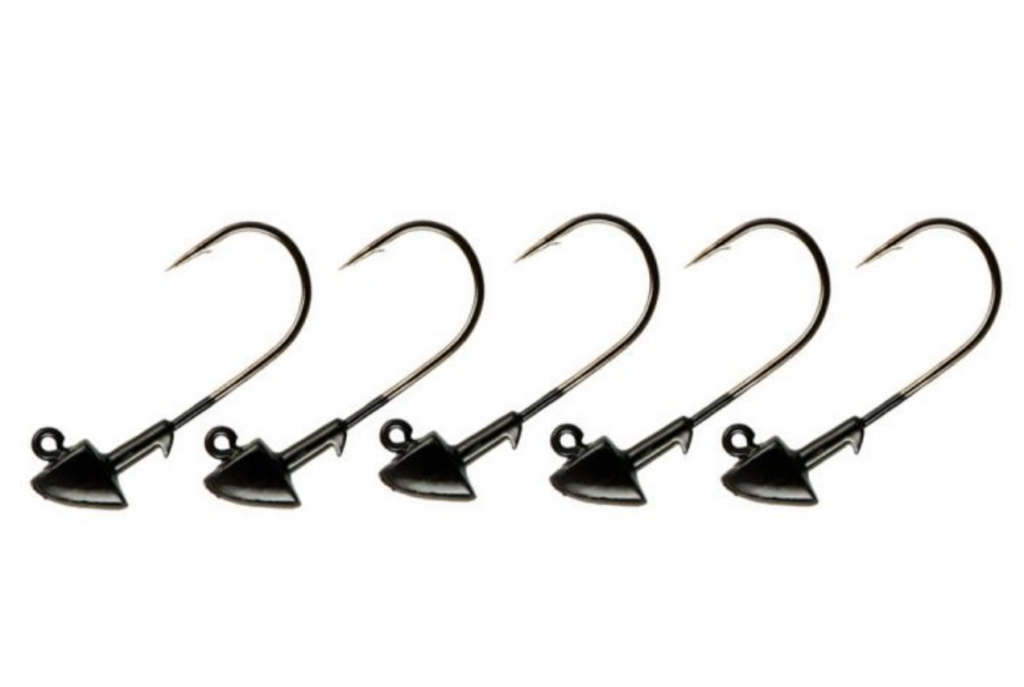
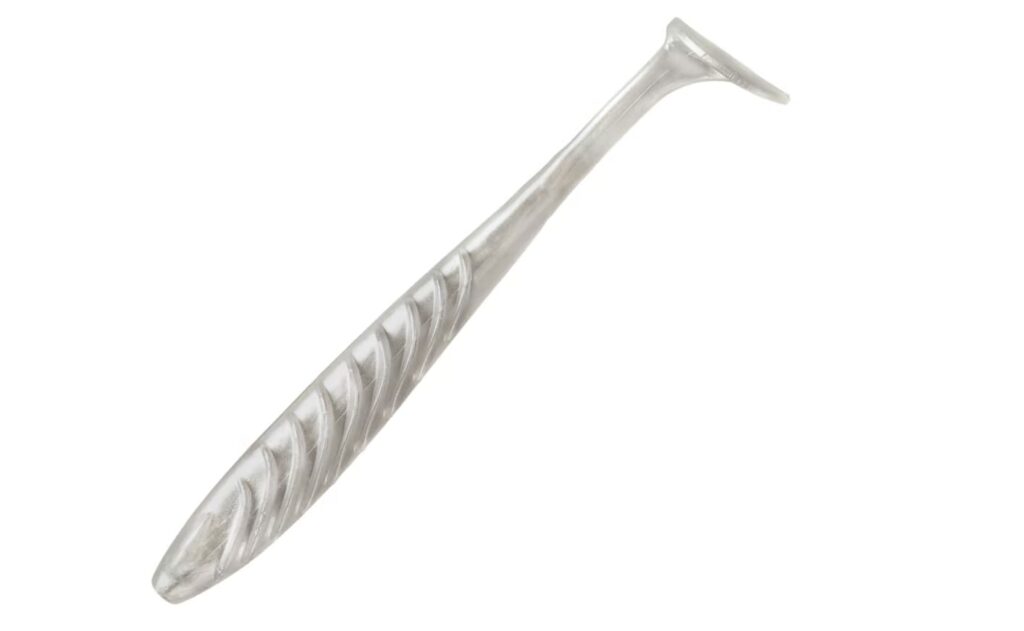
Another productive presentation is to drag jigs. Leave it completely on the bottom, and wait until the fish literally picks it off of the bottom. Again, the weight will depend on a trial and error. Last October, we were using ¾ oz jigs with great luck. Last spring we used a ¼.
Set up in those current breaks and let it drag!
RECOMMENDED GEAR:
You can use code NICOLE15 for 15% off of these baits, as well as all recommended baits at lurenet.com
Slow Running Crankbaits
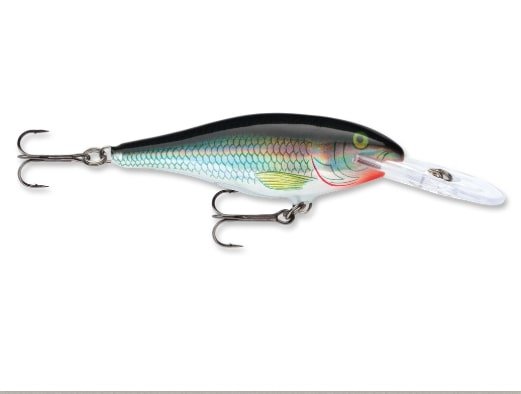
I’m a BIG fan of crankbaits for all times of the year. Although metabolisms are running slower, you still can’t go wrong covering ground with a Rapala scatter rap or traditional shad rap. The key here, however, is to simply go slower. I’ll run crankbaits over 4 mph in the summer, but in the spring I barely break two.
As for picking the right one, you need to keep a few factors in mind. Remember the faster you go – the deeper it goes. So when picking the right size and running depth – be sure to factor in your speed and the depth of the water column. I like to run it as close to the bottom as I can get away with.
Grab my favorite Bomber A right here.
Sturgeon are a Bonus
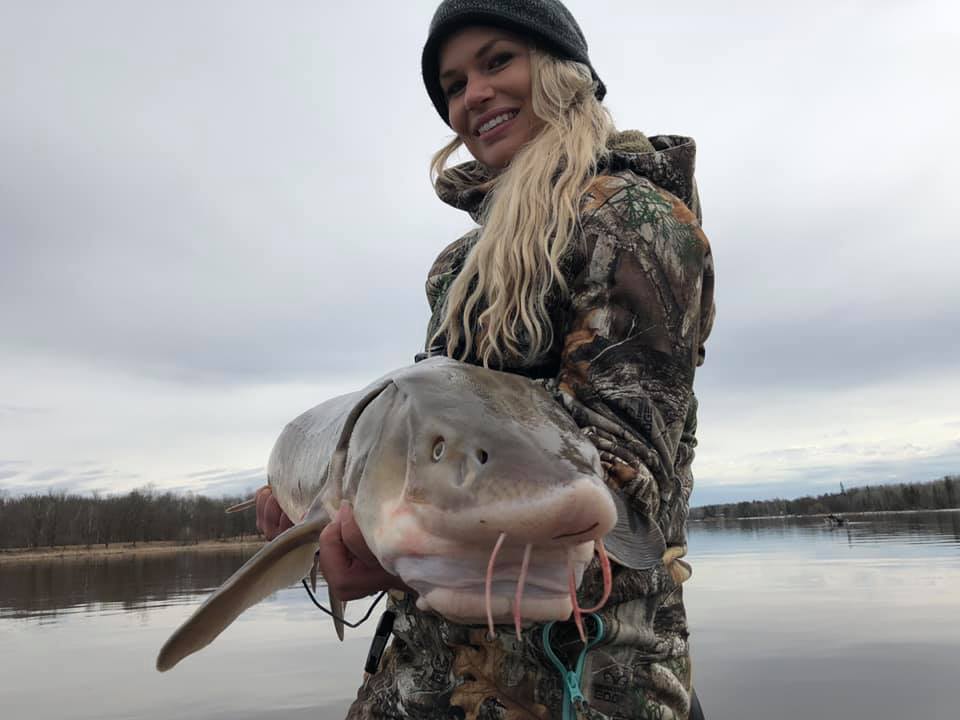
One of the best parts of walleye fishing at Rainy River is the fact that you always have the chance to hook into one of these trophies too. Of course, if you are dragging or jigging, you always have a chance of hooking into one, but pulling them in with a 10 lb line and a medium action rod is a real challenge (and will eat up a lot of your time!).
I always recommend having some sturgeon gear along. If walleye fishing is slow, you can pull out your sturgeon rod and set up downstream from one of the holes. All you need is a heavy rod, circle hooks, and flat weights. Dead minnows and worms will work great as bait.
You can learn all about sturgeon fishing in my guide: The Ultimate Guide to Sturgeon Fishing Rainy River.
Regulations and Conservation
Finally, you need to be aware of the regulations and proper conservation practices. As of 2023, the spring sturgeon harvest season on Canada-Minnesota Border Waters runs April 24 – May 7th and you must have a sturgeon tag with you if you plan to keep the allowed single sturgeon (must be between 45-50″ or over 70″ in length). You don’t need a sturgeon tag if you don’t plan to keep a sturgeon in the harvest window, however. The catch-and-release season runs the October before through April 23rd and picks up again May 8th – 15th before closing May 16th – June 30th. There is another harvest season and catch-and-release window later on in the summer.
One of the best things you can do to conserve this amazing fishery is to practice quality fish handling practices. This means:
- Don’t keep the fish out of the water for no longer than 30 seconds to a minute
- Do NOT do vertical holds
- Properly support the fish
- Be mindful of gills when grabbing the plate
- Don’t let the fish flop around (this will cause internal damage)
The information above is courtesy of the Minnesota Department of Natural Resources.
Rainy River Walleye Summary
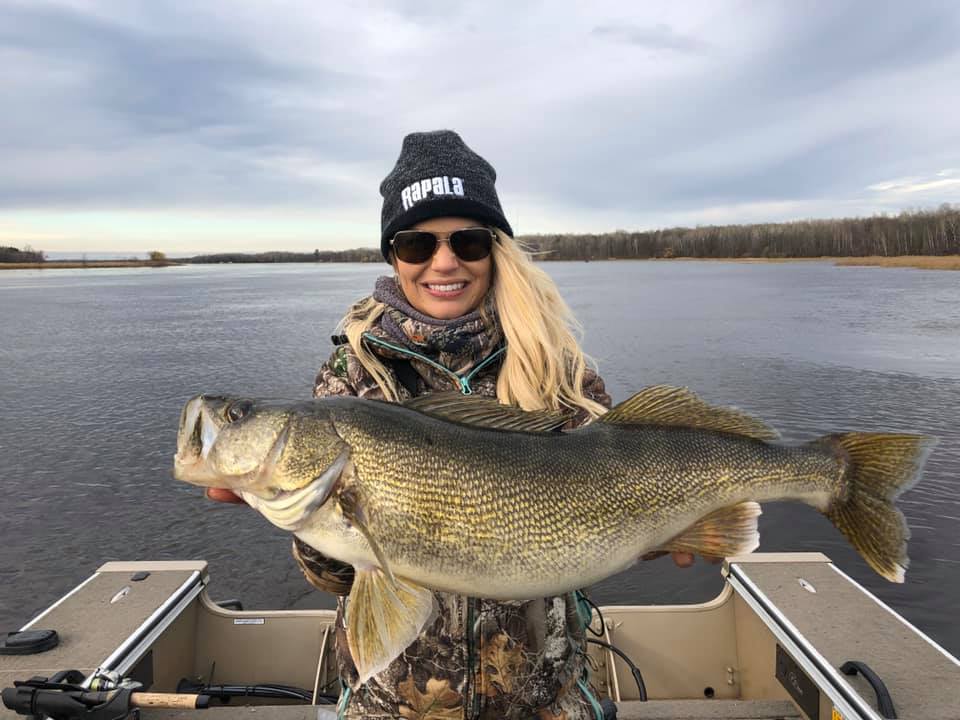
The final step is to simply get out there and fish. People often get hesitant due to the colder weather, crowds, and from simply never doing it before. That’s why I highly recommend you just start. Grab a buddy, plan a trip, and hit the water. With a little bit of preparation, you can have one of the best trips of your life this spring.
In summary:
- Be careful of timing: right after ice-out but before the Big Fork and Little Fork break open is your best chance for trophy fish.
- Get there early, and get off the water early.
- Find current seams (especially along edges of bays), inlets, and think about where the baitfish might funnel.
- Try bouncing and/or dragging jigs on the bottom. If you need extra weight, throw on a paddletail.
- On a tough bite, try covering the extra ground with crankbaits. If you are on them, you can always switch over to jigs.
- Try adding a stinger hook for a better turnover rate.
- Remember to practice good fish handling, so we can ALL enjoy this fishery for years to come.

